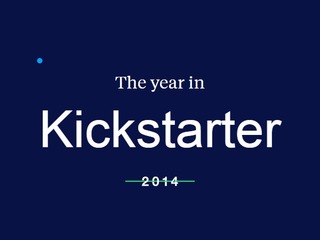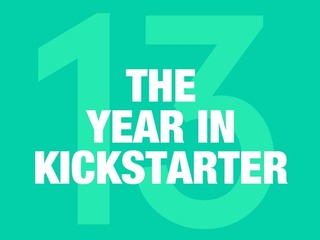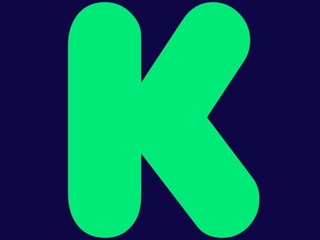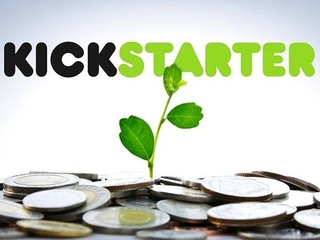When BetterHelp was young: the early years
BetterHelp and Vator have teamed up for Becoming Us, a virtual group therapy program
Read more...
Our when they were young series is a look back at the modest days of startups, what traction they had in their first few years, and how they evolved. In the end, we hope to provide a glimpse into what great startups looked like in their first three years.
Stories like these are always well received because it reminds us that anyone, regardless of pedigree and environment, can rise above the noise and have great influence. They show us the value of being resilient, persistent, and committed. If we can follow their footsteps, maybe we too can have similar success.
This segment is on Kickstarter.
— Kickstarter's First Year —
Founders: Perry Chen, Yancey Strickler, and Charles Adler
Founded: November 2005
Initial company description: Chen has the initial idea for Kickstarter in 2001, while living in New Orleans. He wanted to bring Austrian duo Kruder & Dorfmeister to play a concert, but found it difficult to get funding to put the show together.
"i remember standing in my kitchen talking to my roommate, earl scioneaux, about this idea i just had for a website. it was late 2001 or early 2002, and i had been frustrated by my experience trying to put together a concert. the show never happened, but the idea for kickstarter was born from my frustration," he writes in 2012.
However, Kickstarter is not founded until Chen meets Strickler in 2005.
"Perry and I met in the fall of 2005. I was a regular at a restaurant in Brooklyn where he waited tables. Perry had continued to work on the idea for Kickstarter, and eventually he told me about it. We started discussing it over beers and ping-pong," Strickler writes in 2014. "The idea got steadily more real for me as we shared it with our friends — many of whom were artists we hoped would one day use Kickstarter, and whose feedback we incessantly solicited."
Chen makes this early design for Kickstarter on a whiteboard purchased at a Staples in SoHo:
Website, 11 months from founding: In October 2006, Chen completes Kickstarter's first design, which is never used.
 "Perry is not a designer — as you will see — but the vision for what Kickstarter would become was there from the beginning. The all-or-nothing goal, the deadline, the project video, the tiered rewards, "back this project," "backers," and page architecture are already present," Strickler writes in 2012.
"Perry is not a designer — as you will see — but the vision for what Kickstarter would become was there from the beginning. The all-or-nothing goal, the deadline, the project video, the tiered rewards, "back this project," "backers," and page architecture are already present," Strickler writes in 2012.
"And note the name — Kickstartr without an 'e.'"
— Kickstarter's Second Year —
Personnel, at one year and two months from founding: Adler joins Kickstarter in January 2007 after meeting Chen through a mutual friend.
"Before Kickstarter, Perry had been an artist, day trader, recording engineer, gallerist, and pre-school teacher. I was a rock critic and writer. Ends up these are not the best qualifications to start a website," writes Strickler. "In 2007 Perry was introduced to Charles, and things began to take better shape. Charles was a designer. He and Perry worked closely to interpret the ideas into wireframes and sketches."
Product, at one year and 11 months from founding: In the Fall of 2007, Adler completes the first version of Kickstarter's project page.
— Kickstarter's Third Year —
Name change, at two years and 10 months from founding: In September 2008, the company officially changes its name to Kickstarter.  Personnel, at two years and 10 months from founding: In September 2008, Lance Ivy joins as one of three freelance engineers, eventually becoming the company's lead engineer.
Personnel, at two years and 10 months from founding: In September 2008, Lance Ivy joins as one of three freelance engineers, eventually becoming the company's lead engineer.
"I joined Kickstarter as the only backend engineer and worked mostly solo for the first two years, successfully building and operating the site while also contributing substantively to the founders' vision. When we hired up a full team, I opted to stay on the technical track rather than move into management. In that capacity I focused strategically on whichever layer of the system (frontend, backend, ops, culture & process) needed the most attention," Ivy writes on his LinkedIn profile.
— Kickstarter's Fourth Year —
Funding, at three years and four months from founding: In March 2009, Kickstarter raises $10 million in funding from investors that include Union Square Ventures, Jack Dorsey, Zach Kleina, David Cross, Caterina Fake, Betaworks, Matt Haughey, Peter Hershberg, Dan Rosensweig, Joshua Schachter, Craig Shapiro and Christopher Kaskie.
"We are all well aware of what is happening to the existing models for funding creative ideas. But what we have not seen enough of, yet, are new models to replace them. Creative people will continue to produce amazing works. We do not think technology and the Internet will change that, other than possibly to accelerate the rate of creativity. But how will these creators get the funding to produce the work and put food on their tables and roofs over their heads? That is an open question and one we are very interested in helping to answer," Fred Wilson of Union Square Ventures writes in 2011 about the investment.
"We believe that Kickstarter is a very important and fundamental idea that will most certainly be part of the answer. Simply put, Kickstarter allows everyone to fund the projects they want to see come to fruition. The creators set the amount of funding they need and the marketplace determines whether the project is worthy of funding."
Launch, at three years and five months from founding: On April 28, 2009 at 4:30 pm, Kickstarter launches.

"Kickstarter aims to let creative people of all kinds — journalists, artists, musicians, game developers, entrepreneurs, bloggers — raise money for their projects by connecting directly with fans, who receive exclusive access and rewards in exchange for their patronage. Like Josh Freese and Jill Sobule, the site allows creators to have multiple tiers of rewards (e.g. $20 for the book, $50 for signed copy) with optional limits for each," Andy Baio, the future CTO of Kickstarter, writes on his blog.
"The model is simple: a project creator sets a fundraising goal, deadline, and an optional set of rewards for backers. If the goal’s reached by the deadline, then everyone’s charged via Amazon Payments and the backers get their goodies. If the goal’s not reached, nobody’s charged. It’s all or nothing."
First project, at three years and five months from founding: Chen launches the first project, called Grace Jones Does Not Give a F$#% T-Shirt (Limited Edition). Stricker is the first backer. The project is unsuccessful as it raises only $625 out of a $1,000 goal from 30 backers.
Successfully funded project, at three years and six months from founding, one month from launch: The first successfully funded project, called Drawing for Dollars, is launched on May 3, 2009. It raises $35 from three backers, including Chen.
"I like drawing pictures. and then i color them too. so i thought i would suggest something for me to draw and then if someone wants me to draw it then they can put in some pennies and then ill draw it.
and color it," it says in the project description. "That project is still very emblematic of what Kickstarter is; a guy saying give me $5 and I’ll draw a picture of something for you and it worked. That’s kind of what it still is, just on different scales," Strickler says in 2015.
"That project is still very emblematic of what Kickstarter is; a guy saying give me $5 and I’ll draw a picture of something for you and it worked. That’s kind of what it still is, just on different scales," Strickler says in 2015.
Three projects are successfully funded in Kickstarter's first week.
Public mention, at three years and six months from founding, one month from launch: In May 2009, Jeopardy champion Ken Jennings mentions Kickstarter on his blog.
"The crossword was born in newspapers, but I assume that, like a hardy tapeworm, it may survive their death. (Unlike the Jumble.) It won’t die, it’ll just transmute to another sphere, like V’ger. But I’m not sure yet what that process is going to look like," he writes.
"Eric Berlin thinks he might know, which is why I’m plugging his new venture here. He’s using Kickstarter.com, a sort of micropayment website that allows visitors to fund artists in ventures they find worthwhile."
Media appearance, at three years and seven months from founding, two months from launch: In June 2009, Perry speaks at IgniteNYC and shares his six principles to have a successful crowdfunding experience.
Funded projects, at three years and eight months from founding, three months from launch: On July 1, 2009, 13 projects are successfully funded in a single day. Then, on July 14, nearly $60,000 is pledged to nine projects, including four that made over $10,000 each, making it Kickstarter's most successful single day yet.
"It’s not anyone’s idea of fun to go out and ask for money, make yourself vulnerable to your audience and face potential failure, but without those risks, there’s no reward. We’d like to congratulate all of these creators for doing such a fantastic job, and we hope they list more projects soon," writes Strickler.
Personnel, at three years and eight months from founding, three months from launch: On July 20, 2009, Andy Baio is named as Kickstarter's first CTO.
"I’ve been on the board for the last 10 months, helping find the development team and providing some guidance on tech, design, and community issues. And in the last year, watching the site evolve was an amazing experience, from an idea to a website with the potential to change the way things are made," Baio writes.
Product, at three years and eight months from founding, three months from launch: In July 2009, Kickstarter adds media editing, allowing creators to replace their photos or videos after the project has launched. The company also makes it easier for creators to get information from their backers, including their shipping addresses and email by allowing them to send our a survey. Traction, at three years and eight months from founding, three months from launch: By July 2009, over $250,000 has been pledged on Kickstarter.
Traction, at three years and eight months from founding, three months from launch: By July 2009, over $250,000 has been pledged on Kickstarter.
Public mention, at three years and nine months from founding, three months from launch: In August 2009, musician April Smith, who successfully funded her album on the platform, mentions Kickstarter on stage at Lollapalooza. 
Business model, at three years and 10 months from founding, five months from launch: In September 2009, Kickstarter announces that it will start charging fees. Projects will be charged 5 percent their funding total if they are successfully funded, while projects that don’t reach their funding goal will have no fees. It also remains free to launch and to back projects.
"Tying our fee to a project’s success aligns our interests with those of project creators: if your project succeeds, then so do we," writes Strickler.
Traction, at three years and 10 months from founding, five months from launch: By September 2009, more than 100 projects have been successfully funded and more than $500,000 has been pledged.
Personnel, at three years and 11 months from founding, six months from launch: In October 2009, Kickstarter makes its first full-time NYC hires: Cassie Marketos joins at CS, and Fred Benenson joins for data and engineering.
Product, at three years and 11 months from founding, six months from launch: In October 2009, Kickstarter adds a Discover Projects page, allowing users to find projects based on tags, project state or end date.
Traction, at three years and 11 months from founding, six months from launch: By October 2009, more than 800 projects have launched on Kickstarter.
— Kickstarter's Fifth Year —
New office, at four years and one month from founding, eight months from launch: In December 2009 Kickstarter gets its first office, a floor of an old tenement building on the Lower East Side, which Chen finds on Craigslist.  Accolades, at four years and one month from founding, eight months from launch: In December 2009, Kickstarter is included in the New York Times' Year of Ideas.
Accolades, at four years and one month from founding, eight months from launch: In December 2009, Kickstarter is included in the New York Times' Year of Ideas.
"At Kickstarter, creative types post a description of a project they want to do, how much money they need for it and a deadline. If enough people pledge money that the artists reach (or surpass) their financial goals, then everyone is billed, paying in advance as you would for a magazine subscription. For goals that aren't reached, nobody is charged," the Times writes.
"In essence, Kickstarter offers a form of market research for artists. For perhaps the first time, an artist can quickly answer a nagging question: Does anyone actually want my art badly enough to pay for it? If the goal is reached, the artist now has a list of subscribers to her vision."
Traction, at four years and one month from founding, eight months from launch: By December 2009, more than 1,000 projects have been started on Kickstarter
New office, at four years and one month from founding, eight months from launch: By the end of 2009, Kickstarter's most funded project is Designing Obama, which raised $84,613.81 from 1,312 backers. Successfully funded projects, at four years and two months from founding, 9 months from launch: In January 2010, Gailey’s Send a Postcard, Get a Postcard becomes Kickstarter’s 500th successfully funded project, raising $456 from 182 backers.
Successfully funded projects, at four years and two months from founding, 9 months from launch: In January 2010, Gailey’s Send a Postcard, Get a Postcard becomes Kickstarter’s 500th successfully funded project, raising $456 from 182 backers. Product, at four years and three months from founding, 10 months from launch: In February 2010, Kickstarter releases the first episode of its podcast. The first guest is Emily Richmond, a young woman whose project, called LET'S SAIL AROUND THE WORLD !!, had raised $8,141 from 148 backers.
Product, at four years and three months from founding, 10 months from launch: In February 2010, Kickstarter releases the first episode of its podcast. The first guest is Emily Richmond, a young woman whose project, called LET'S SAIL AROUND THE WORLD !!, had raised $8,141 from 148 backers.
"We’ve been huge fans of Emily’s project from the very beginning, and talking to her while she was docked off the coast of Ensenada, Mexico in the midst of an epic storm made us love her all the more. She is a courageous person with a serious passion for life and adventure. A totally inspiring woman," writes Strickler.  Media, at four years and four months from founding, 11 months from launch: In March 2010, Kickstarter takes part in SXSW Interactive and Music. Baio does a solo talk on “Gaming the Crowd: Turning Work Into Play,” while Chen is interviewed about “Funding Your Projects From the Crowd,” and Strickler is interviewed about, “Crowdfunding Music: Raising Money From Fans.”
Media, at four years and four months from founding, 11 months from launch: In March 2010, Kickstarter takes part in SXSW Interactive and Music. Baio does a solo talk on “Gaming the Crowd: Turning Work Into Play,” while Chen is interviewed about “Funding Your Projects From the Crowd,” and Strickler is interviewed about, “Crowdfunding Music: Raising Money From Fans.”
Product, at four years and six months from founding, one year and one month from launch: In May 2010, Kickstart begins providing users with an activity feed and the ability to follow projects and creators.
Product, at four years and seven months from founding, one year and two months from launch: In June 2010, Kickstart and Rooftop Films host the first Kickstarter Film Festival on the roof of the OId American Can Factory in Brooklyn. It features 90 minutes of film and video from a dozen Kickstarter projects, including feature films, stop-motion animation, documentaries, art, and dance.
Media coverage, at four years and nine months from founding, one year and four months from launch: In August 2010, Kickstarter is covered on CNN.
Traction, at four years and 10 months from founding, one year and five months from launch: In September 2010, Kickstarter unveils research into its pledges, finding that reward tiers under $25 constitute a combined 38 percent of pledges and 10 percent of dollars raised.
Product, at four years and 11 months from founding, one year and six months from launch: In October 2010, Kickstarter unveils a slew of new features and updates, including embeddable video and project analytics.
— Kickstarter Today —
Today, Kickstarter has seen over $4.4 billion total dollars pledged to Kickstarter projects, and over 167,000 successfully funded projects, with over 16 million total backers.
(Image source: blog.producthype.co)
BetterHelp and Vator have teamed up for Becoming Us, a virtual group therapy program
Read more...Ginger started by selling health data to providers, before pivoting to becoming a provider itself
Read more...Talkspace was originally called Talktala, and focused on video group therapy sessions
Read more...
Joined Vator on




